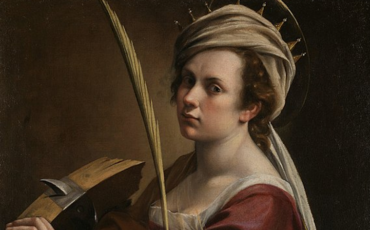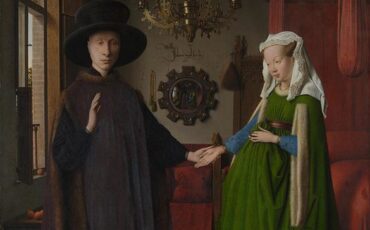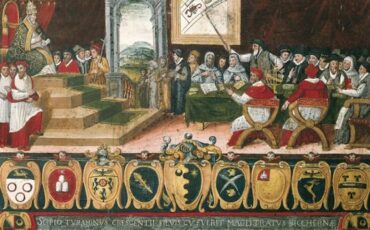Blog
Blog Posts

Happy 200th Birthday to The National Gallery in London
The main impetus for the founding of The National Gallery was the purchase, by the British government, of thirty-eight paintings – including masterpieces by Rembrandt, Rubens and Titian – from the collection of John Julius Angerstein, a successful banker and marine insurance broker born in St Petersburg to German parents. When the gallery first opened to the public, in May 1824, it was housed in Angerstein’s former home at 100, Pall Mall.
Read more
From Humble Abode to Creative Hub: Van Gogh House London Reinvents Itself
Did you know that Vincent Van Gogh lived in London before he became an artist and that the house in which he lived is open to the public? Van Gogh’s House is a non-profit contemporary arts organisation based in the South London boarding house where the young Vincent lived in 1873-74.
Read more
Building a Future, Facing a Past: The British Museum’s Expansion Plans
The British Museum is one of the world’s great museums but has a very inappropriate name. Many of the treasures on display were acquired – sometimes by fair means, sometimes by foul – over the centuries when Britain was a great imperial power and most people thought little of the morality of taking treasures from countries that had been colonised as part of the British empire and displaying them in central London in a building designed by Sir Robert Smirke and his brother Sidney. Many of these countries now want their treasures back and are growing increasingly strident in demands for their return.
Read more
Unveiling the Mysteries of UK General Elections
Unlike in the United States, where the Constitution was written down by the Founding Fathers nearly 250 years ago and is regarded as sacrosanct by many Americans, the British Constitution has never been formally inscribed but instead has evolved over centuries. The Supreme Court in Parliament Square can only decide if the government has acted within the law as it stands and cannot decide what that law should be. The Court does not have the power to overrule the politicians who sit in the Palace of Westminster opposite. Parliament always has the ultimate authority under the British system.
Read more
10 Things That May Surprise You About Works of Art at The National Gallery, London
In 1824 the House of Commons agreed to pay £57,000 for the art collection of the wealthy banker John Julius Angerstein. His 38 pictures became the core of a new national collection. Great encouragement came from another collector, Sir George Beaumont, who donated 16 paintings to the new gallery and in 1838 the National Gallery in Trafalgar Square finally opened its doors.
Read more
The Classic Routemaster Double-Decker Bus: History & Fun Facts
For many visitors to London, one of the iconic sights of a trip to the capital is a traditional London red double-decker bus. Known as a Routemaster, these buses was designed in the late 1940s and manufactured until 1968 when production stopped, mainly because their open back doors – which were one of the attractions for many Londoners – made them unusable by those in a wheelchair. They were still used on many routes until the early twenty-first century and some can be seen occasionally on routes such as the Routemaster Heritage Route 15 which runs from Blackwell to Trafalgar Square.
Read more
Sir Winston Churchill: A Soldier, Statesman, and Symbol of Strength
Winston Churchill is undoubtedly Britain’s most revered politician. He was born in 1874 at Blenheim Palace as a member of a major aristocratic family and is buried in a modest grave nearby. His statue stands opposite the clock, which everybody refers to as Big Ben (actually the name of the bell behind the clock). Chartwell, his house in Kent, is is an important money earner for the National Trust, who welcome around a quarter of a million visitors there every year.
Read more
Day Trip To Windsor From London – Things To Do In Windsor
Which is the best place to visit outside London on a trip to the United Kingdom? Windsor is one of the most exciting towns to visit with its large royal park, attractive shops, cosy pubs, and tea rooms. It also has Windsor Castle, the oldest castle in the world still occupied by the family for whom it was built – the British royal family.
Read more
Yoko Ono Music of the Mind Exhibition at Tate Modern in London
The artist Yoko Ono, who turned 91 in February, has enjoyed a successful—if notorious—career over seven decades. She spent the seventies as the wife of Beatle John Lennon until his assassination in New York in 1980, and appropriately for British audiences, that part of her life forms the core of her current exhibition, ‘Music of the Mind’ at Tate Modern.
Read more
See 3 City of London Models at The London Centre
On the Aldermanbury side of Guildhall, you will find the London Centre, the base for New London Architecture and home to its magnificent London models. These 3D scale models of the capital and its buildings are a great resource if people want to see the architecture of London or the historical development of the city—or simply want to trace routes across the metropolis. Their sheer size is jaw-dropping.
Read more
Calendar Curiosities: Leap Years, Easter Moves, and the Curious Origins of Dates We Celebrate
Dates on the calendar we normally use have mainly Christian origin but some of them reflect pagan origins and everything changed in the eighteenth century with the adoption of a new calendar.
Read more
William Shakespeare at the Victoria & Albert Museum in London
William Shakespeare (1552 to 1616) was undoubtedly our greatest playwright and poet. He lived until the age of fifty-two and although he was born and is buried in Stratford-upon-Avon, it was in London that he made his fame and fortune. Known as The Bard of Avon, his plays are regularly revived on the London stage, and the Globe Theatre, where he made his reputation as a playwright, was rebuilt in the late twentieth century largely as a result of the efforts of the American actor and theatre director Sam Wanamaker.
Read more


